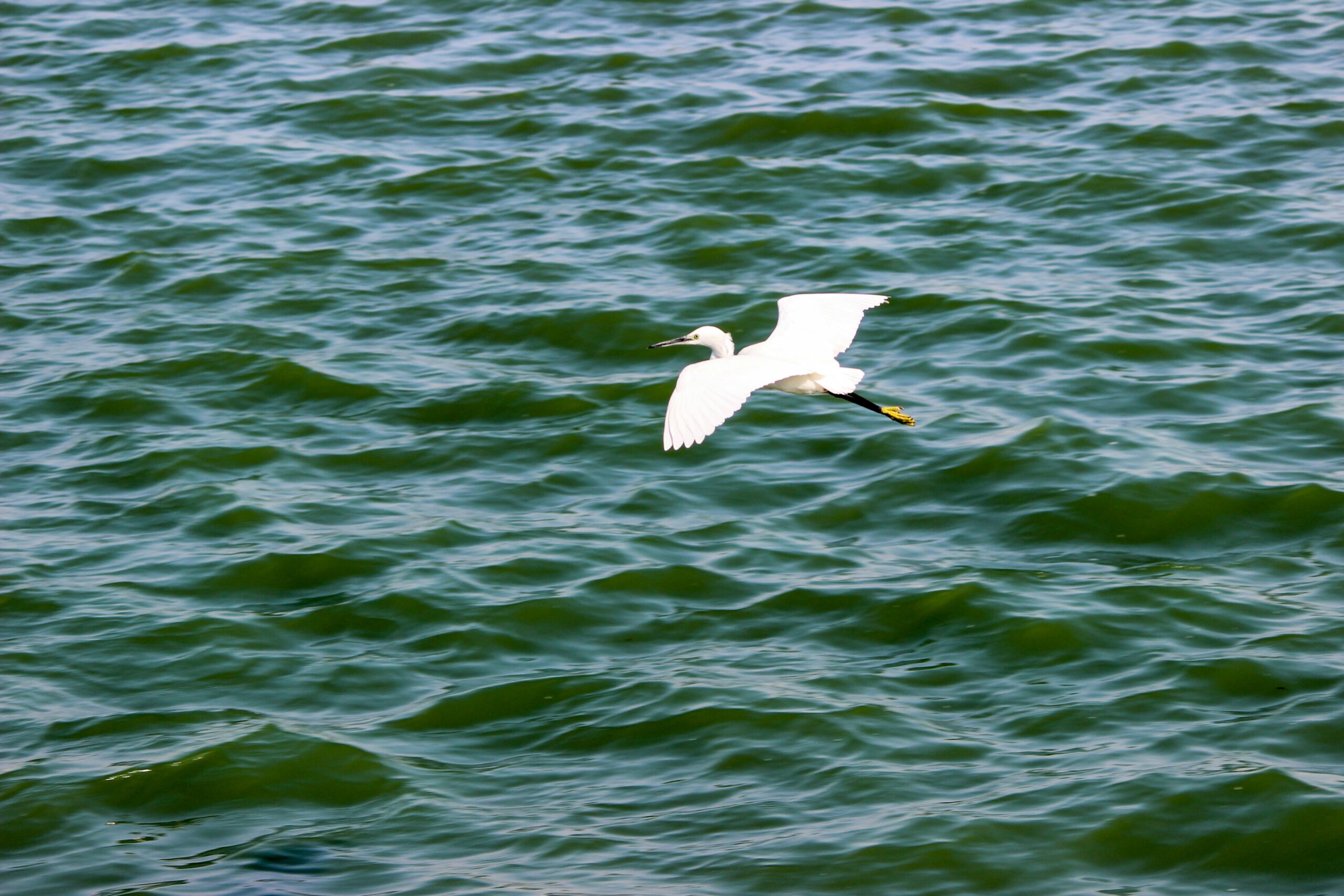Egrets are long-legged wading birds from the heron family. Known for their striking white feathers and graceful movement, egrets captivate birdwatchers. Though rare in the UK once, their population has steadily grown. This guide will show you where to see egrets in the UK, the species you may find, and tips for spotting them.
A Brief Overview of Egrets in the UK
Egrets belong to the heron family, and several species live in the UK. The little egret is the most common. In recent years, their population has increased, particularly along coasts and wetlands. While egrets once lived mainly in southern Europe, they now breed in the UK, especially in coastal regions and marshlands.
You can find several species of egrets in the UK, including the little egret, great egret, and occasionally the cattle egret. The little egret is the most common, known for its slender body and striking white plumage. It’s important to note that the presence of these birds can vary across different seasons. The migration patterns of egrets influence their distribution, and sightings are often seasonal, particularly for the great egret.
Where to See Little Egrets in the UK
The little egret has become more widespread in the UK, especially in the southern and coastal areas. This species is relatively small, with all-white plumage, black legs, and bright yellow feet. Little egrets thrive in the UK’s wetland habitats, often seen in coastal estuaries, tidal mudflats, and freshwater marshes. Their adaptability to various wetland environments has helped them increase in numbers.
Southern England
The southern UK offers great opportunities to see little egrets. Areas like the Solent in Hampshire, Chichester Harbour in West Sussex, and Poole Harbour in Dorset are known for their large populations. These regions have ideal habitats, including shallow coastal waters and wetlands, perfect for egrets hunting fish, small crustaceans, and amphibians. The presence of little egrets in these areas also plays a role in the local ecosystem, as they help control the population of smaller aquatic creatures.
Several nature reserves along the south coast, such as Arne RSPB Reserve in Dorset and Pagham Harbour in West Sussex, are also home to little egrets. Mudflats and salt marshes provide feeding grounds for these graceful birds. Visiting these reserves also gives birdwatchers a chance to observe other fascinating species, making them ideal spots for birdwatching.
East Anglia
The east coast, particularly Norfolk and Suffolk, offers excellent opportunities to see little egrets. Norfolk has several well-known birdwatching sites, including Titchwell Marsh and the Norfolk Broads, where you can spot egrets. The salt marshes and tidal mudflats along the coastline are prime spots to see these birds. The Norfolk Broads, a series of interconnected wetlands, is particularly popular due to its vast, expansive habitats that support a wide variety of birdlife.
The Thames Estuary
The Thames Estuary, covering parts of Essex and Kent, is another hotspot for spotting little egrets. The mudflats and salt marshes here are ideal feeding grounds. Areas like Harty Marshes on the Isle of Sheppey and Shoeburyness in Essex are great places to see them. These areas also provide opportunities for seeing other waders and shorebirds, adding to the appeal for birdwatching enthusiasts.
Where to See Great Egrets in the UK
The great egret is larger, with all-white plumage, a long neck, and a yellow beak. Although once rare, it has been seen more often in recent years. The great egret stands out because of its size and graceful posture, often easily identifiable by its stature and elegant movements in the water. This species has started to expand its presence in the UK, particularly in southern regions.
Wider Coastal Areas
The great egret has expanded its range in the UK. While still scarce, sightings are becoming more common, especially in southern and coastal regions. Areas like Cornwall and Devon have seen more great egrets, particularly in Estuary Marshes and nature reserves. Their larger size makes them noticeable in wetlands, where they can be seen hunting for fish and amphibians. If you’re in these regions, try visiting the Exe Estuary in Devon or Fal Estuary in Cornwall, both of which are prime locations for spotting great egrets.
Wetlands and River Systems
Great egrets are also seen in wetland reserves and river systems in southern England. The River Severn in Gloucestershire and parts of Hampshire’s River Test offer opportunities for spotting this majestic bird. Great egrets prefer wetland habitats where they hunt for fish in shallow waters. They are often found standing still for long periods, waiting to ambush their prey. Visiting areas near river mouths and estuaries greatly increases your chances of observing them in action.
Occasional Sightings of Cattle Egrets in the UK
The cattle egret is smaller and stockier, with a yellowish-orange beak and feet. Though this species usually lives in Africa and Asia, it has appeared in the UK. Cattle egrets are seen in agricultural areas and grasslands, often feeding near livestock and cattle. These birds tend to be more active during the day and can often be found foraging in open fields where they follow livestock to catch insects disturbed by the animals.
Sightings of cattle egrets are rare but becoming more frequent, especially in spring and summer. Areas with large agricultural fields, such as Kent and Surrey, are where you may spot these birds. Their presence in the UK is relatively new, and their sightings are mostly accidental, though the species seems to be gradually adapting to the local environment.
Best Times to See Egrets in the UK
While egrets are visible year-round in the UK, the best time to see them is in the autumn and winter months when they are more active. In the spring and summer, egrets are often found in breeding colonies, especially in the south. Their migratory habits also affect their visibility, with larger flocks observed in winter.
Due to their migratory nature, you might see egrets in larger numbers during migration. The ideal time to visit wetland reserves and coastal habitats is typically between October and March, when food is abundant and egrets are easier to spot. Birdwatchers can also enjoy the sight of egrets during breeding seasons when they engage in more spectacular displays and behaviors.
Tips for Spotting Egrets
To increase your chances of spotting egrets, consider these tips:
- Early morning or dusk: Egrets are most active during early mornings or late afternoons as they hunt for food.
- Bring binoculars: Egret sightings are often distant, so binoculars will help you observe them more clearly.
- Look for wetlands and marshes: Egrets prefer wetland areas. Visit estuaries, mudflats, or shallow rivers to find them.
- Join a guided birdwatching tour: If you’re new to birdwatching, consider joining a guided tour with a local expert who can help you spot and identify egrets. Guided tours often offer insider knowledge on the best times and locations for viewing egrets.
- Patience is key: Egrets are often still, waiting for their prey, so patience is essential when spotting them.
Conclusion
Egrets are elegant birds that can now be spotted more often across the UK. From the little egret to the great egret, and occasional sightings of the cattle egret, these birds grace wetland habitats and coastal regions. Their growing presence in the UK highlights the importance of preserving wetland environments. Observing them in the wild is an enriching experience, one that connects you to the delicate balance of our natural ecosystems.
Whether you’re a seasoned birdwatcher or just starting, seeing egrets in the UK is a rewarding experience. Visit the right spots at the best times to enjoy these majestic birds in their natural habitats. Keep in mind that their population is growing, and the opportunities to spot them will only increase.

